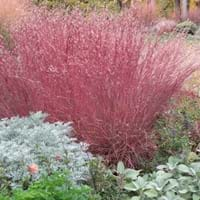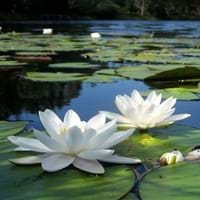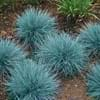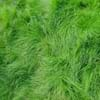Life Span
Annual
Perennial
Type
Grass
Aquatics, Flowering Plants
Origin
North America, United States, Northeastern United States, Mid-Atlantic United States, Southeastern United States, North-Central United States, Central United States, South-Central United States, Southwestern United States, Mexico
Not Available
Types
Greener Pastures
Not Available
USDA Hardiness Zone
4-9
4-11
AHS Heat Zone
10 - 3
Not Available
Sunset Zone
1a, 1b, 2a, 2b, 3a, 3b, 4, 5, 6, 7, 8, 9, 10, 11, 12, 13, 14, 15, 16, 17, 18, 19, 20, 21, 22, 23, 24
Not Available
Habit
Clump-Forming
Spreading
Flower Color
Purple
White
Flower Color Modifier
Bicolor
Bicolor
Fruit Color
Not Available
Non Fruiting Plant
Leaf Color in Spring
Light Green
Light Green
Leaf Color in Summer
Light Green
Light Green
Leaf Color in Fall
Red, Purple
Green
Leaf Color in Winter
Tan
Green
Leaf Shape
Grass like
Round
Plant Season
Summer, Fall, Winter
Early Summer, Late Summer
Sunlight
Full Sun, Partial Sun
Partial Sun
Type of Soil
Loam, Sand
Aquatic Plant
The pH of Soil
Acidic, Neutral, Alkaline
Aquatic Plant
Soil Drainage
Well drained
Average
Bloom Time
Late Summer, Early Fall
Early Summer, Late Summer
Tolerances
Drought
waterlogging
Where to Plant?
Ground
In Water
How to Plant?
Divison, Seedlings
Stem Planting
Plant Maintenance
Medium
Medium
Watering Requirements
Medium
Plant grows in water
In Summer
Lots of watering
Aquatic Plant
In Spring
Moderate
Aquatic Plant
In Winter
Average Water
Aquatic Plant
Soil pH
Acidic, Neutral, Alkaline
Aquatic Plant
Soil Type
Loam, Sand
Not Applicable
Soil Drainage Capacity
Well drained
Aquatic Plant
Sun Exposure
Full Sun, Partial Sun
Partial Sun
Pruning
Remove damaged leaves, Remove dead branches, Remove dead leaves
No need to prune
Fertilizers
All-Purpose Liquid Fertilizer
Fertilize the first year
Pests and Diseases
Red blotch
Leaf eating pests, Sap-Sucking Insects, Stem rot
Plant Tolerance
Drought
waterlogging
Flower Petal Number
Single
Single
Foliage Texture
Fine
Fine
Foliage Sheen
Matte
Matte
Attracts
Butterflies
Fishes
Allergy
Not Available
Not Available
Aesthetic Uses
Showy Purposes
Showy Purposes, Water gardening
Beauty Benefits
Not Available
Good for skin, Moisturizing, Weightloss
Environmental Uses
Air purification
Not Available
Medicinal Uses
Not Available
Antibacterial, Anti-fungal, anti-inflammatory, Antioxidants, Astringent, Clears heat, Combats Stress, Detoxification, Diabetes, High cholestrol, Improve heart health, Liver problems, Low Blood Pressure, Phosphorus, Rich in Iron, Vitamin B, Vitamin C
Part of Plant Used
Leaves, Root
Leaves, Root, Stem
Other Uses
Showy Purposes
Can be made into a herbal tea, Culinary use, Used as Ornamental plant, Used in herbal medicines
Used As Indoor Plant
No
Yes
Used As Outdoor Plant
Yes
Yes
Garden Design
Cutflower, Dried Flower/Everlasting, Groundcover, Mixed Border, Rock Garden / Wall
Bog Garden, Water Gardens
Botanical Name
ERAGROSTIS spectabilis
Nymphaea lotus
Common Name
Purple Lovegrass
white Egyptian lotus, tiger lotus, white lotus or Egyptian white water-lily
In Hindi
eragrostis spectabilis
सफेद कमल
In German
eragrostis spectabilis
Tigerlotus
In French
eragrostis spectabilis
Lotier d'Égypte, Lotus tigré
In Spanish
Eragrostis spectabilis
loto tigre, nenúfar blanco egipcio
In Greek
eragrostis spectabilis
λευκό λωτού
In Portuguese
Eragrostis spectabilis
nenúfar-branco, lótus-branco, lótus-do-egipto, loto-sagrado-do-egito e lótus-sagrado-do-egito
In Polish
Eragrostis okazałe
białego lotosu
In Latin
Eragrostis spectabilis
albus Lotus
Phylum
Magnoliophyta
Magnoliophyta
Class
Liliopsida
Magnoliopsida
Order
Cyperales
Nymphaeales
Family
Poaceae
Nymphaeaceae
Genus
Eragrostis
Nymphaea
Clade
Angiosperms, Commelinids, Monocots
Angiosperms
Tribe
Eragrostideae
Not Available
Subfamily
Chloridoideae
Not Available
Number of Species
Not Available
Not Available
Importance of Purple Lovegrass and White Lotus
Want to have the most appropriate plant for your garden? You might want to know the importance of Purple Lovegrass and White Lotus. Basically, these two plants vary in many aspects. Compare Purple Lovegrass and White Lotus as they differ in many characteristics such as their life, care, benefits, facts, etc. Every gardener must at least have the slightest clue about the plants he wants to plant in his garden. Compare their benefits, which differ in many ways like facts and uses. The medicinal use of Purple Lovegrass is Not Available whereas of White Lotus is Antibacterial, Anti-fungal, anti-inflammatory, Antioxidants, Astringent, Clears heat, Combats Stress, Detoxification, Diabetes, High cholestrol, Improve heart health, Liver problems, Low Blood Pressure, Phosphorus, Rich in Iron, Vitamin B and Vitamin C. Purple Lovegrass has beauty benefits as follows: Not Available while White Lotus has beauty benefits as follows: Not Available.
Compare Facts of Purple Lovegrass vs White Lotus
How to choose the best garden plant for your garden depending upon its facts? Here garden plant comparison will help you to solve this query. Compare the facts of Purple Lovegrass vs White Lotus and know which one to choose. As garden plants have benefits and other uses, allergy is also a major drawback of plants for some people. Allergic reactions of Purple Lovegrass are Not Available whereas of White Lotus have Not Available respectively. Having a fruit bearing plant in your garden can be a plus point of your garden. Purple Lovegrass has no showy fruits and White Lotus has showy fruits. Also Purple Lovegrass is not flowering and White Lotus is not flowering . You can compare Purple Lovegrass and White Lotus facts and facts of other plants too.





